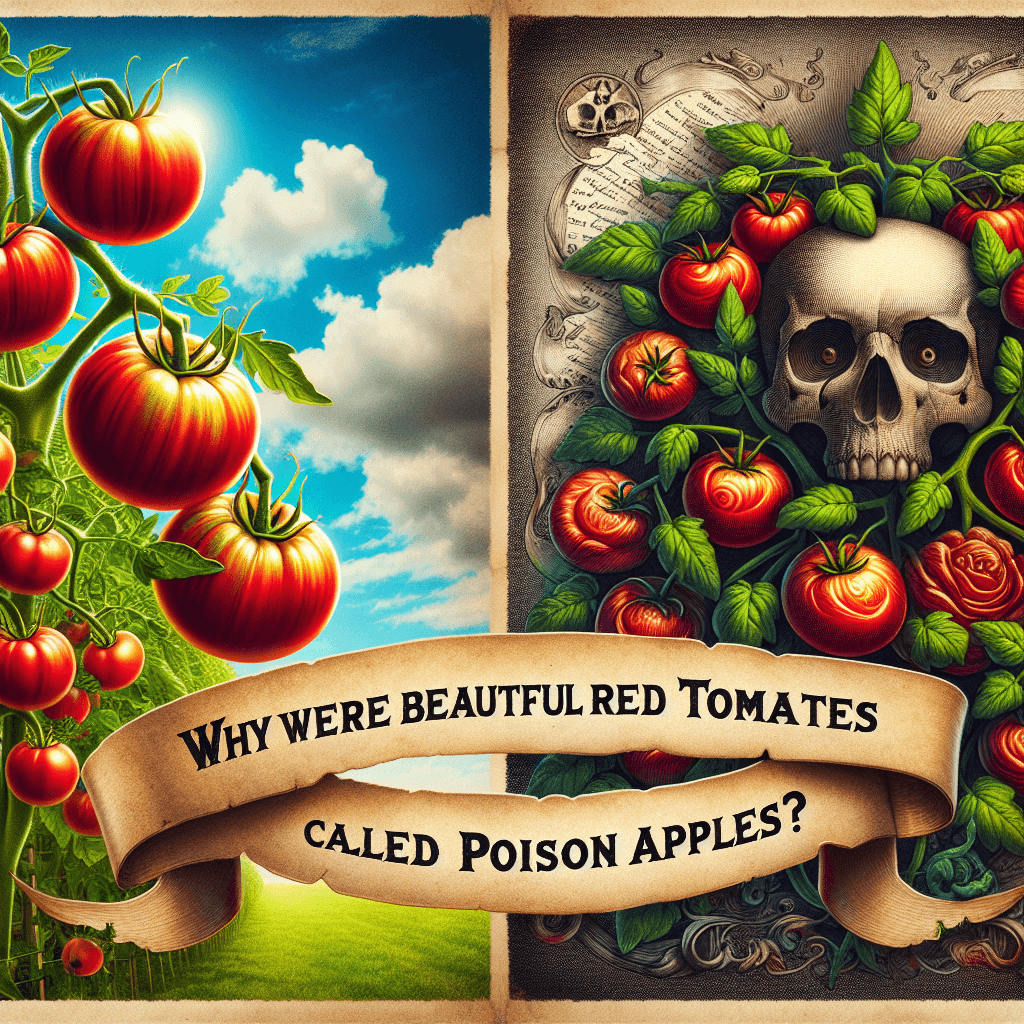Why were beautiful red tomatoes once called poison apples
This juicy, vibrant fruit was once shunned as a deadly 'poison apple,' and the shocking reason has more to do with aristocratic dinner plates than the tomato itself.


Too Long; Didn't Read
TLDR: Wealthy Europeans ate tomatoes off lead-rich pewter plates. The fruit's acidity leached lead from the plates, causing lead poisoning. People blamed the tomato, not the plate, and its relation to the toxic nightshade family fueled the rumor.
The Poison Apple Myth: Why Were Beautiful Red Tomatoes Once Feared?
Can you imagine a world where a juicy, ripe tomato—the star of salads, sauces, and sandwiches—was viewed with suspicion and fear? For centuries, this was the reality. Brought to Europe from the Americas in the 16th century, the vibrant tomato was not embraced as a culinary delight but rather shunned as a "poison apple." This beautiful fruit was relegated to the status of an ornamental plant, grown for its looks but never for the dinner plate. This blog post will delve into the fascinating history behind this myth, exploring the blend of botanical association, scientific misunderstanding, and a deadly chemical reaction that gave the beloved tomato its undeservedly sinister reputation.
The Nightshade Connection: A Case of Mistaken Identity
The primary source of the tomato's bad reputation was a simple case of family association. The tomato (Solanum lycopersicum) is a member of the Solanaceae plant family, more commonly known as the nightshade family.
In 16th-century Europe, this family name carried terrifying connotations. Its most famous members were plants deeply associated with poison and witchcraft, including:
- Deadly Nightshade (Belladonna): A highly toxic plant known for causing hallucinations and death.
- Mandrake: A plant with a forked root resembling a human figure, steeped in dark folklore and known for its poisonous properties.
- Henbane: Another poisonous plant used in traditional medicine and associated with sorcery.
When European botanists first encountered the tomato, they immediately noticed the resemblance of its leaves and flowers to these deadly relatives. The Italian botanist Pietro Andrae Matthioli, for instance, classified the tomato as a type of mandrake. This botanical link was enough to convince a wary public that the beautiful red fruit must also be hiding a deadly secret.
The Aristocracy's Deadly Dinnerware
While botanical suspicion planted the seed of fear, a strange phenomenon among the European elite helped it grow. Wealthy aristocrats who were brave enough to try the "poison apple" sometimes fell ill and even died, seemingly confirming the fruit's toxic nature. The real culprit, however, wasn't the tomato—it was their plates.
In the 17th and 18th centuries, the rich dined off ornate pewter tableware. This pewter had an exceptionally high lead content. Tomatoes are naturally high in acid, and when placed on these lead-heavy plates, a chemical reaction occurred. The tomato's acid would leach lead from the pewter, which was then ingested along with the fruit.
The result was lead poisoning, with symptoms ranging from abdominal pain to death. The connection was clear to the diners: they ate the strange new fruit and became sick. The tomato was blamed, while the expensive and fashionable pewter was never suspected. Meanwhile, the lower classes, who ate off wooden trenchers, consumed tomatoes without any ill effects, further cementing the idea that the fruit was a danger only to the refined upper class.
The Influence of Wary Experts
The fear was further solidified by influential writers and herbalists of the day. John Gerard, a respected English herbalist, wrote about the tomato in his widely read 1597 book, The Herball or Generall Historie of Plantes. He described the tomato plant as having a "ranke and stinking savour" and stated that the fruit was "corrupt" and offered "very little nourishment to the bodie." He declared it poisonous, and his authoritative opinion shaped public perception in Britain and its American colonies for nearly two centuries, effectively banishing the tomato from the kitchen.
From Poison to Pizza: The Tomato's Redemption
It wasn't until the 19th century that these myths began to unravel. As science advanced, the true nature of the tomato was understood, and the lead-leaching properties of pewter became known. Brave gardeners and farmers, particularly in Italy and Spain, had been cultivating and eating the fruit for years, and their culinary traditions eventually spread. The invention of the pizza in Naples in the late 1800s gave the tomato its ultimate moment of glory, transforming it into a global superstar.
The journey of the tomato from a feared "poison apple" to a kitchen staple is a powerful reminder of how easily myth can be born from a combination of circumstance, association, and misunderstanding. The key culprits—the nightshade family connection, lead-leaching pewter plates, and the warnings of early botanists—created a long-lasting and entirely undeserved reputation. So, the next time you enjoy a fresh slice of pizza or a rich marinara sauce, take a moment to appreciate the dramatic and misunderstood history of its star ingredient.


